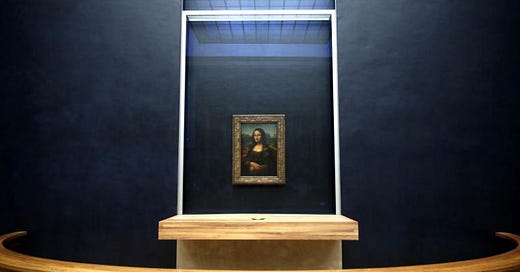Is Mona Lisa Fake?
It’s hard to understand the value of non-fungible tokens (NFT) or a digital certificate representing ownership of a specific asset.
Last year, Beeple’s “Everydays: the First 5000 Days” collection of 5,000 days of digital art, sold for $69 million.
An NFT can represent the rights to a song, a digital piece of art, or even a physical asset.
Some believe it’s merely a digital image, a JPEG, that anyone can easily copy and paste.
We see thousands of images online every day.
So why have NFTs sold for millions or tens of millions of dollars?
They are just a bunch of pixels represented on a screen.
Why is the Mona Lisa worth billions or practically priceless?
There are prints of it all over the world.
Why is that any different from an NFT or an image that may be on many websites?
It’s the original, that symbolizes a connection to the great Leonardo Da Vinci.
If you owned it, you may also own the rights to it and require reproductions to pay a royalty.
Before reproductions, originals were the only thing.
To see the Mona Lisa, you needed to travel to see the original.
Some suggest that behind the bulletproof glass, it may even be a reproduction of the Mona Lisa and the original is stored safely away somewhere.
We can never know.
Yet with a non-fungible token, we can easily prove the work’s authenticity. Ownership is logged on the public blockchain and the metadata connected to the token can be verified based on cryptography.
There are additional properties that bring value to NFTs too.
They can be easily traded over the web, across continents instantly, and don’t require expensive insurance!
So is the Mona Lisa a fake?
We will only know once it is documented on the blockchain.



